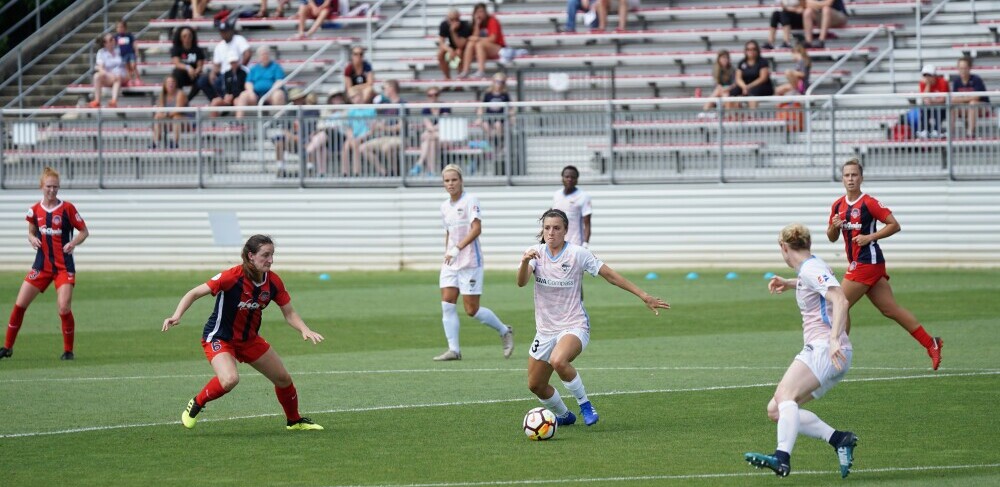In the modern era of soccer, technology has become a critical tool for enhancing player performance, optimizing training, and making informed tactical decisions.
One of the most significant advancements in this field is GPS tracking technology. GPS trackers are now commonly used by professional and amateur teams alike to gain valuable insights into player movements and game dynamics.
In this article, we will explore the various benefits of using GPS tracking in soccer, how it works, and how it can be leveraged to improve performance and strategy on the field.
1. Understanding GPS Tracking in Soccer
a. What is GPS Tracking?
GPS tracking involves the use of Global Positioning System technology to monitor and record the movements of players during training sessions and matches. The technology utilizes satellites to determine the precise location of a player, providing data on distance covered, speed, acceleration, and more. This information is collected through wearable devices, typically in the form of small GPS units embedded in vests or harnesses worn by players.
b. How Does GPS Tracking Work?
i. Data Collection: GPS trackers receive signals from satellites to determine the player’s location on the field. The data is then transmitted to a central system where it is analyzed.
ii. Metrics Tracked: Key metrics include total distance covered, maximum speed, average speed, acceleration, deceleration, and movement patterns. Advanced systems may also measure player workload and heart rate.
iii. Data Analysis: The collected data is analyzed to provide insights into player performance, movement efficiency, and areas for improvement. Coaches and analysts can use this information to make data-driven decisions.
2. Benefits of Using GPS Tracking
a. Enhancing Player Performance
i. Monitoring Workload: GPS tracking helps monitor the physical workload of players during training and matches. By analyzing metrics such as total distance covered and intensity of activity, coaches can ensure players are working at optimal levels without risking overtraining.
ii. Optimizing Training: The data collected through GPS tracking allows for personalized training programs tailored to each player’s specific needs. Coaches can adjust training intensity and volume based on individual performance metrics, leading to more effective and targeted workouts.
b. Improving Tactical Decision-Making
i. Analyzing Movement Patterns: GPS tracking provides insights into players’ movement patterns, including positional play and coverage on the field. This information helps coaches understand how players are positioning themselves and identify areas where tactical adjustments may be needed.
ii. Enhancing Team Strategy: By analyzing GPS data from matches, coaches can assess how well players are adhering to tactical plans and identify any gaps in team formation or positioning. This allows for more informed strategic decisions and adjustments during games.
c. Preventing Injuries
i. Monitoring Player Load: Tracking the physical load placed on players can help prevent overuse injuries. GPS data allows coaches to monitor how much effort players are exerting and adjust their training to avoid excessive strain on muscles and joints.
ii. Identifying Risk Factors: By analyzing patterns in movement and workload, GPS tracking can help identify players at risk of injury. Coaches can use this information to implement preventive measures and ensure players are adequately rested and recovered.
d. Enhancing Player Development
i. Setting Goals: GPS tracking provides concrete data that can be used to set performance goals for players. By tracking improvements in metrics such as speed and distance covered, players can see tangible progress and stay motivated to achieve their objectives.
ii. Tracking Progress: Regular use of GPS tracking allows for continuous monitoring of player development. Coaches can compare data over time to assess improvements and adjust training programs accordingly.
3. Improving Decision-Making Skills
a. Real-Time Feedback
i. Immediate Analysis: Some GPS tracking systems provide real-time feedback during matches and training sessions. This allows coaches to make instant tactical adjustments based on current data, enhancing decision-making and in-game strategies.
ii. Post-Match Review: Analyzing GPS data after matches provides a detailed review of player performance, including movement patterns and areas of the field where players excelled or struggled. This information helps in refining tactics and improving future performances.
b. Tactical Adjustments
i. Formation Analysis: GPS tracking data can reveal how well players are maintaining their positions within different formations. Coaches can use this information to make tactical adjustments and ensure that the team’s shape and structure are effective against opponents.
ii. Opposition Analysis: By analyzing the movement patterns of both their own players and opponents, coaches can identify key areas of strength and weakness. This enables the development of strategies that exploit the opposition’s vulnerabilities while strengthening their own team’s weaknesses.
4. Practical Applications of GPS Tracking
a. Implementing GPS Tracking in Training
i. Warm-Up and Cool-Down: GPS tracking can be used to monitor intensity levels during warm-up and cool-down phases, ensuring that players are properly preparing and recovering from training sessions.
ii. Skill Development: Incorporate GPS tracking into skill development drills to assess how different drills impact player movements and performance. This data can help tailor drills to specific areas of improvement.
b. Integrating GPS Tracking into Match Analysis
i. In-Match Monitoring: Use GPS trackers to monitor player performance during matches, providing real-time insights that can be used for tactical adjustments and in-game strategy.
ii. Post-Match Analysis: Analyze GPS data after matches to review player movements, assess performance, and identify areas for improvement. This data can also be used to compare performance across different matches and opponents.
5. Future Trends in GPS Tracking
a. Advanced Features
i. Integration with Other Technologies: Future developments in GPS tracking may include integration with other technologies such as heart rate monitors, accelerometers, and video analysis systems, providing a more comprehensive view of player performance.
ii. Enhanced Accuracy: Advances in satellite technology and data processing are likely to improve the accuracy and precision of GPS tracking systems, offering even more detailed insights into player movements and performance.
b. Expanding Applications
i. Youth Development: As GPS tracking technology becomes more accessible, its use in youth soccer is expected to increase. This will provide young players with valuable feedback on their performance and development.
ii. Global Adoption: The use of GPS tracking is likely to expand across different levels of soccer, from amateur leagues to professional teams, as the benefits of data-driven performance analysis become more widely recognized.
Conclusion
GPS tracking has revolutionized soccer training and performance analysis, offering valuable insights into player movements, workload, and tactical effectiveness.
By providing detailed data on distance covered, speed, and movement patterns, GPS trackers enable coaches to optimize training, enhance decision-making, and prevent injuries.
As technology continues to advance, the capabilities and applications of GPS tracking in soccer will only grow, offering even more opportunities for improving performance and achieving success on the field.
Embrace the power of GPS tracking to elevate your game and stay ahead in the competitive world of soccer.



